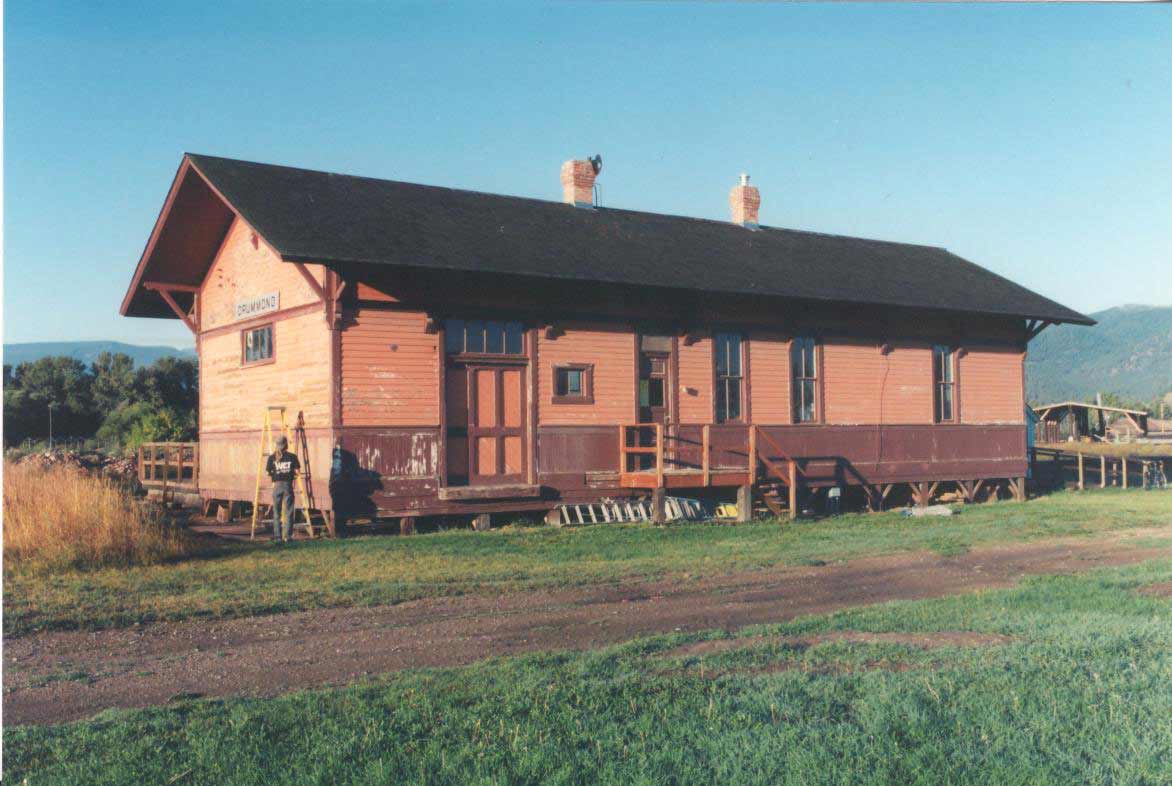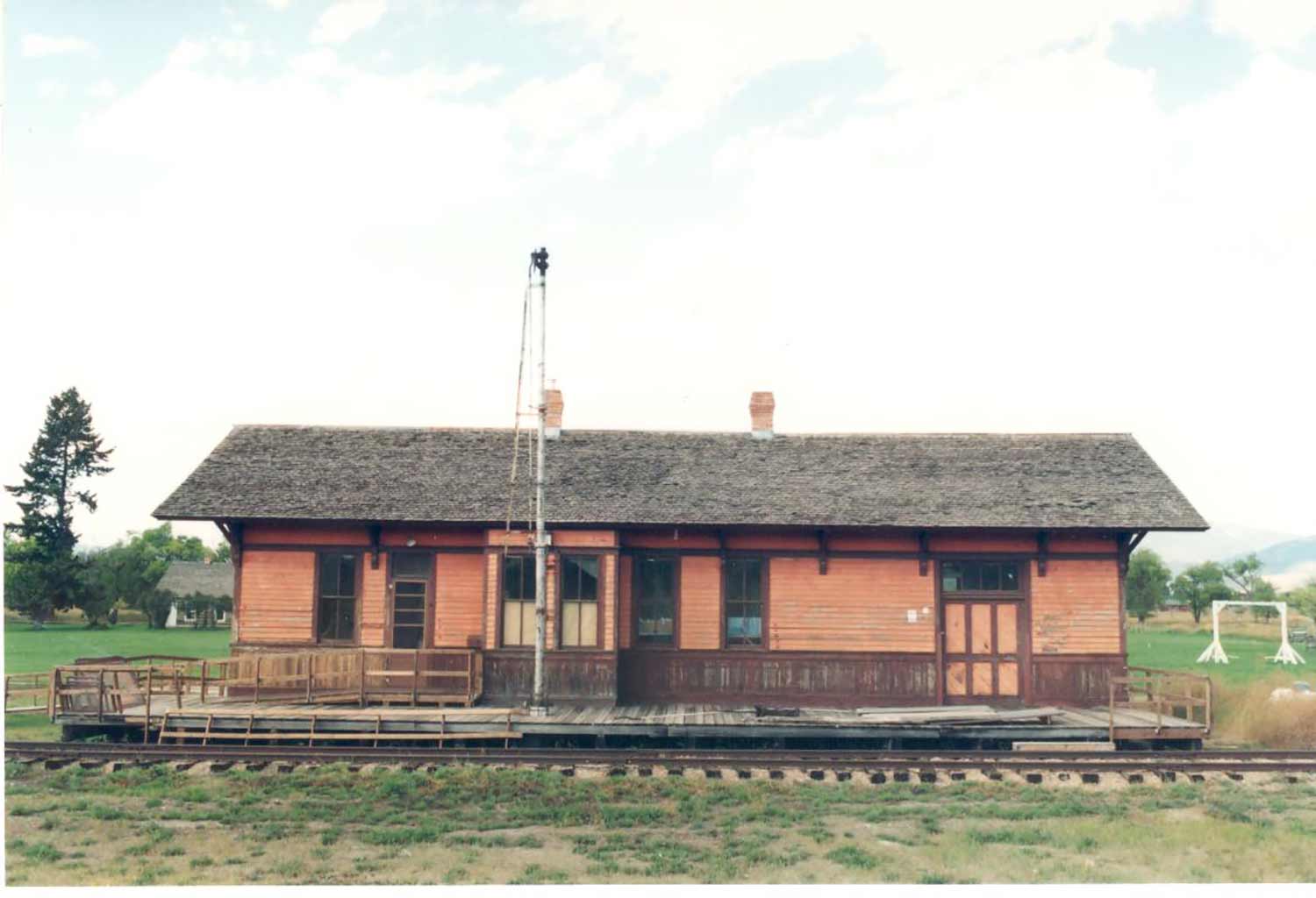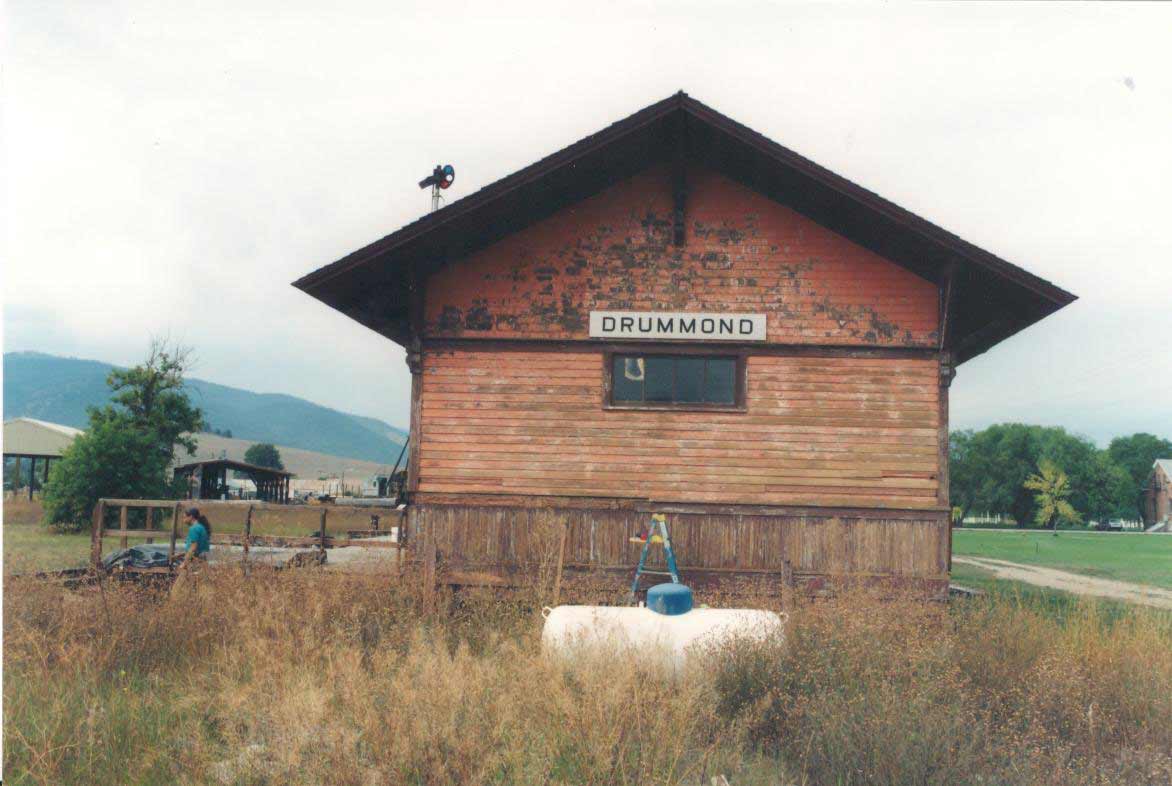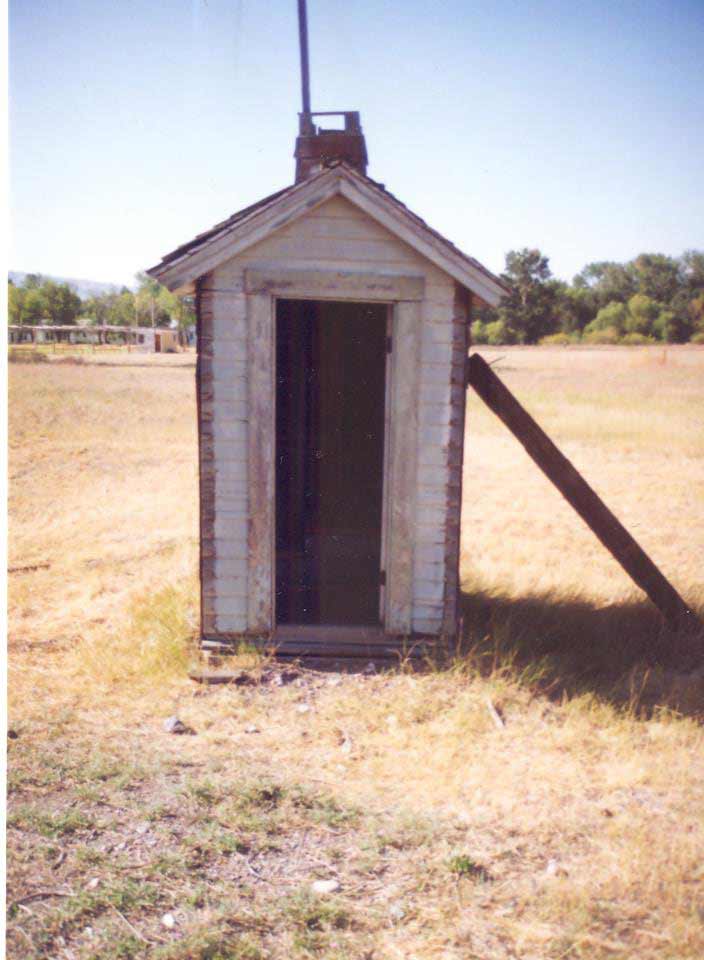





Constructed in 1910, by the Chicago, Milwaukee, St.Paul and Pacific Railroad Company, this “Milwaukee Road” depot served the town of Drummond, about 60 miles southeast of Missoula. The depot was moved to the Fort in 1982 after the railroad closed its Montana operations. It has been restored with assistance from the Missoula Model Railroad Club. An exhibit inside the depot, including the John Barrows Memorial Ticket Office, interprets the history of railroad transportation in western Montana.
Can you spot... the wooden loops on poles? What do you think they were for?
These poles were used to pass mail, train schedules and other paperwork to the train as it passed through the station – no need to come to a full stop!
The 19th century advancement of the railroad system meant progress and hope for Americans country-wide, especially in isolated areas in the western states. Along with the railroad came the creation of boomtowns, and the need for public service stations.
These depots, or railroad stations, were built as close as possible to the center of town, and became hubs for the community. Usually surrounded by freight services for the railroad, such as grain elevators, mills and lumber yards, it was also important to include amenities for passenger trains such as hotels, cafes, groceries and new housing developments. The depot quickly became a symbol of the community, a place to come together around the pot-bellied stove, greet new arrivals, and say goodbye to friends and family.
By 1916 there were over 85,000 American stations, and 5,000 Canadian stations. The majority of these where small, hastily constructed buildings, or even prefabricated, portable depots that sat on an unused set of tracks.
As depot construction improved, combination stations were built. These stations included a public waiting room, housing for the agent, baggage and freight storage areas as well as freight services including coal chutes and a water supply. As the depot became more self-sufficient, depot agents were employed and often lived at the depot. These operators met with the public to help plan trips, sell tickets, and report freight and express movements. Depot buildings often included housing for the depot operator and his family.
Built in 1910, the Drummond Depot was a common style for Milwaukee depots. Similar depot construction was used throughout Montana, Minnesota, Iowa, Illinois and North Dakota, though style often differed depending on location. The outside of the building was commonly covered with clapboard siding with decorative vertical wood sheathing at the bottom and gingerbread structures under the eaves. The depot would have included a waiting room, depot operator’s office, and freight storage as well as a housing area including a sitting room, kitchen and bedroom.
When Milwaukee Railroad operations closed in 1980, all track between Terry, Montana and St. Mary’s, Idaho was removed. The Friends of the Historical Museum at Fort Missoula donated and moved the Drummond Depot to its present site in 1982. Both the Friends of the Historical Museum at Fort Missoula and the Missoula Model Railroad Club have assisted in the renovating and restoring of the building, as well as converting the depot’s interior to house both exhibit and educational space.

